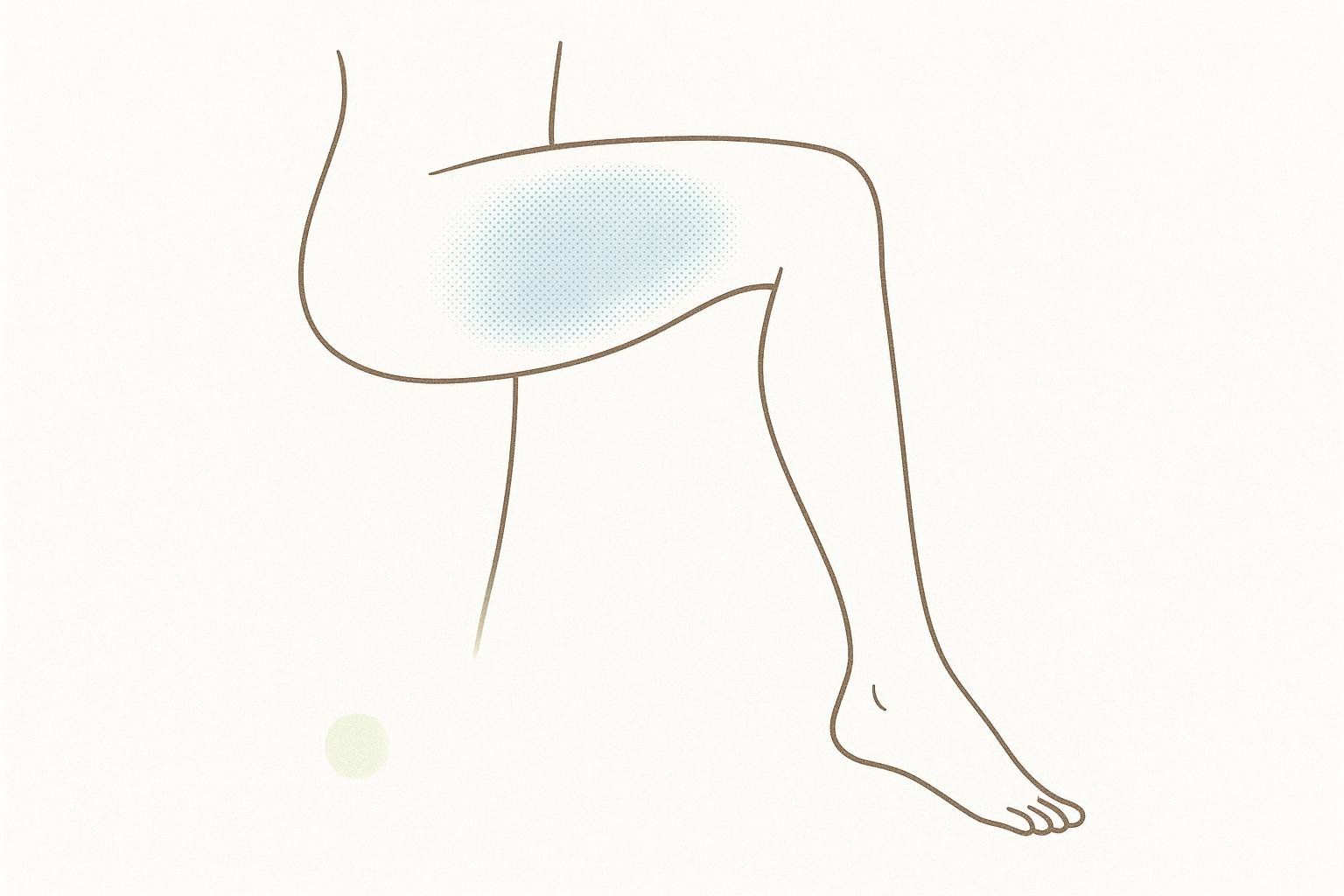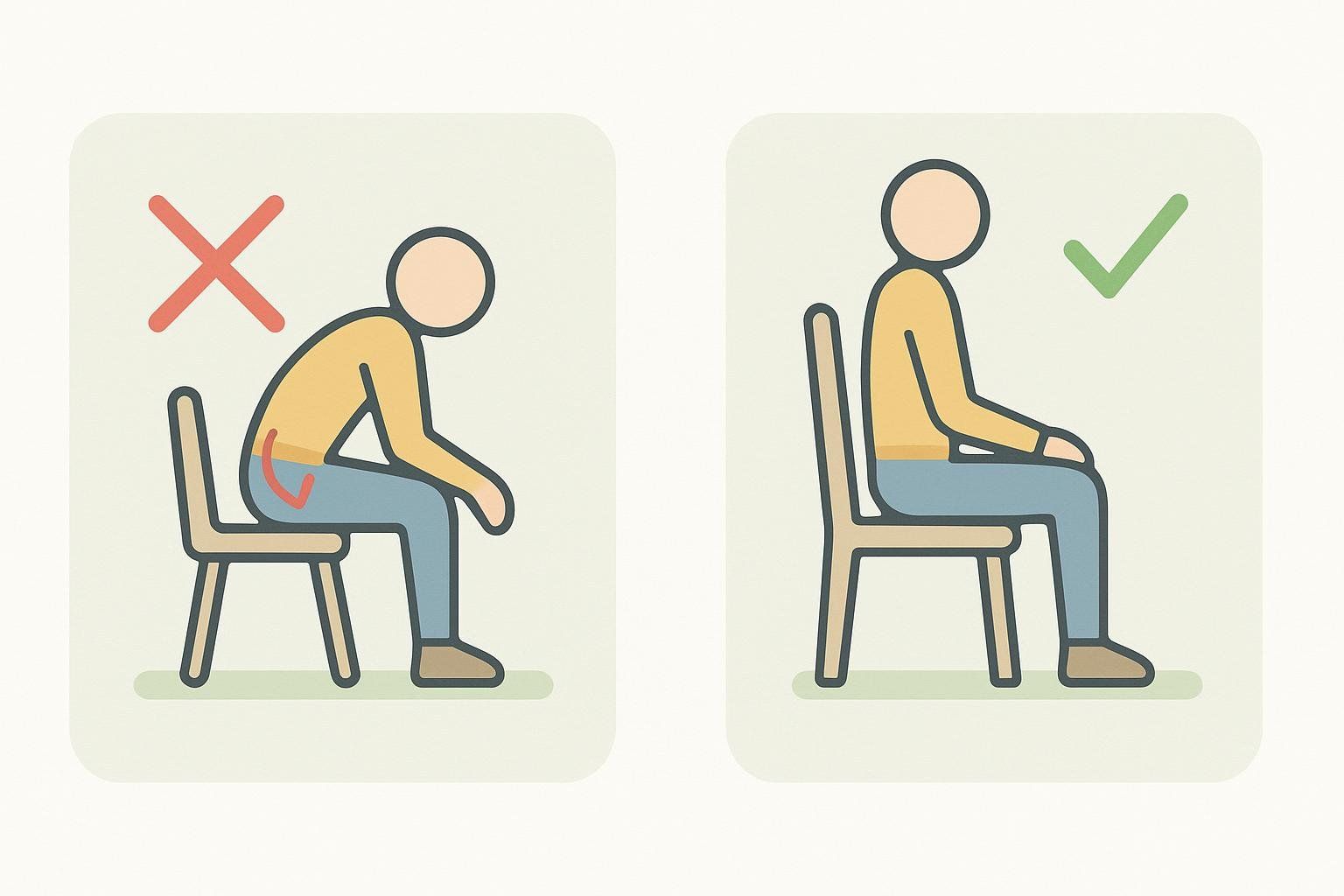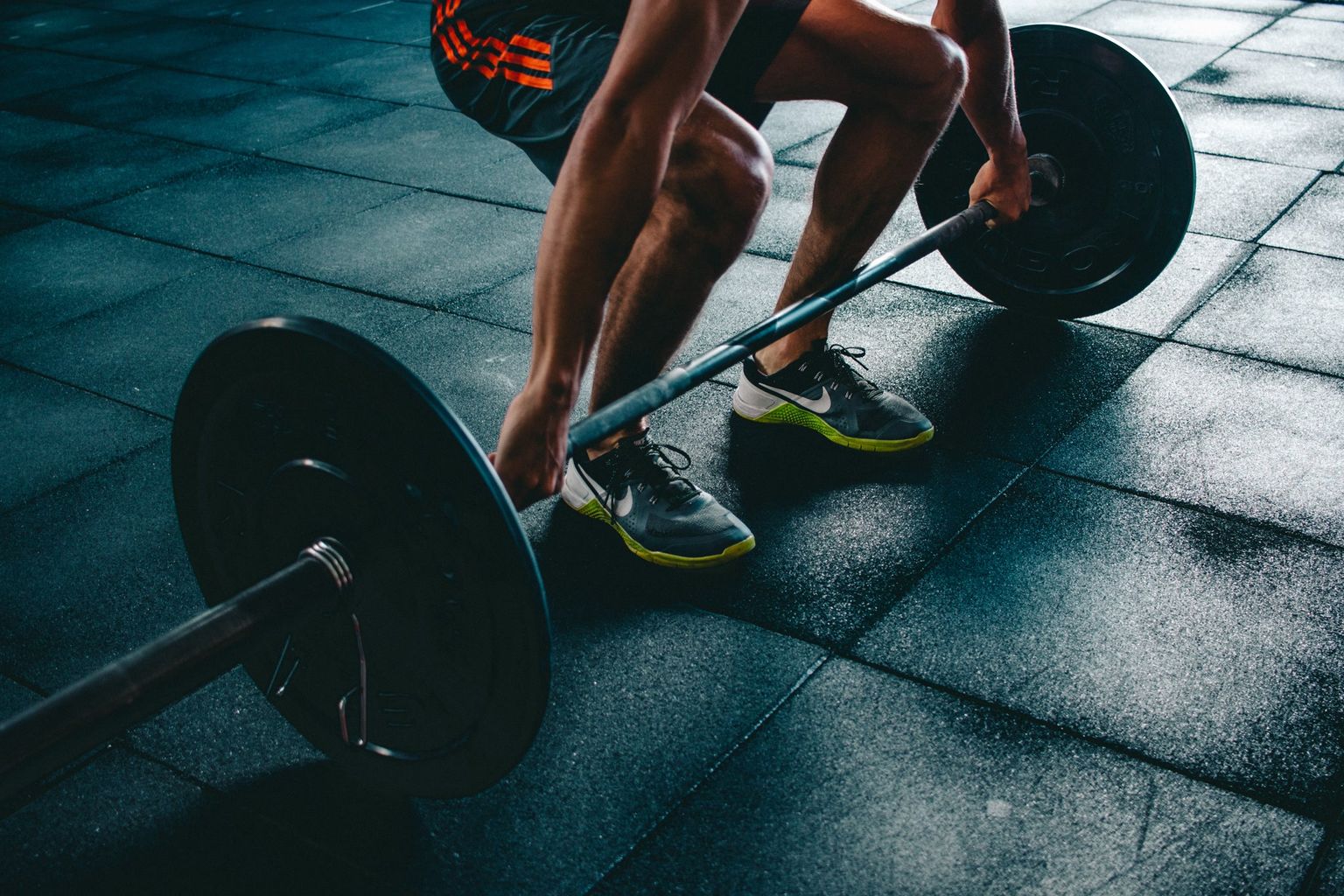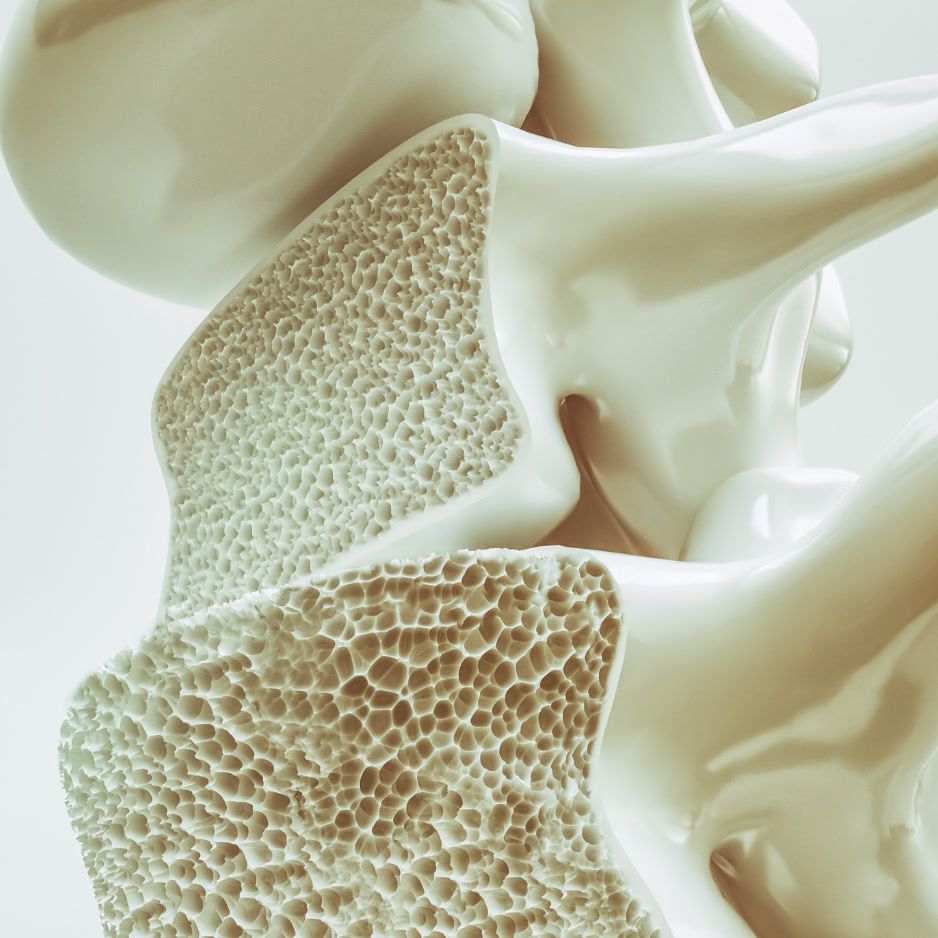Anterior vs Posterior Hip Replacement

Anterior vs Posterior Hip Replacement: Which Is Best?
Hip replacement surgery has come a long way since the first metal-on-plastic implant debuted more than half a century ago. Today, two techniques dominate the conversation:
- Anterior (front-of-the-hip) approach
- Posterior (back-of-the-hip) approach
Both can relieve arthritis pain, restore mobility, and last 20+ years when executed well (Hospital for Special Surgery). Yet each method gets marketed as the fastest or safest option—leaving patients, physical therapists, and even new surgeons sorting through conflicting claims.
This guide combines peer-reviewed data, side-by-side comparisons, and practical recovery insights so you can have an informed discussion with your orthopedic team.
Anterior vs Posterior: Snapshot Comparison
| Feature | Anterior Approach | Posterior Approach |
|---|---|---|
| Incision Location | Front of hip/groin | Back of hip/buttock |
| Muscle Cutting? | Generally muscle-sparing (muscles separated) | Small external rotators detached, then repaired |
| Typical Hospital Stay | 1–2 days | 1–3 days |
| Early Weight Bearing | Same-day or next-day with assistive device | Same-day or next-day |
| Early Functional Edge | Faster up to 2 weeks | Initial recovery may be slightly slower |
| Dislocation Precautions | Fewer restrictions (no “hip precautions”) | Avoid flexing > 90°, crossing legs for 6–8 weeks |
| Ideal Candidates | Commonly selected for lean-to-average-BMI adults motivated for accelerated rehab | Often preferred for revision surgery, significant deformity, or very muscular thighs |
Source: Data synthesized from Hospital for Special Surgery, IU Health, and Arthritis-health comparison guides.
What Do “Anterior” and “Posterior” Actually Mean?
- Anterior = surgeon reaches the joint from the front, sliding between the sartorius and tensor fascia latae muscles—similar to unzipping a jacket from the front.
- Posterior = surgeon accesses the joint from the back, working through the gluteal muscles and short external rotators.
The implant hardware is identical—the difference is the path your surgeon takes to get inside.

Perks of the Anterior Approach
- Muscle-sparing entry may translate to less post-op pain and quicker mobility in the first 14 days (2014 prospective study).
- Fewer hip precautions—no need for an elevated toilet seat or sleeping with a pillow between your knees.
- Supine patient position lets surgeons use live X-ray (fluoroscopy) to fine-tune implant angles, potentially improving leg-length matching.
- Smaller, cosmetically discreet incision that typically sits in the natural groin crease.
Potential Drawbacks of the Anterior Approach
- Front-of-thigh skin can chafe or irritate in higher-BMI patients.
- The surgical learning curve is steep; outcomes are more dependent on surgeon experience compared with the posterior approach.
- Studies report a higher risk of temporary numbness in the outer thigh due to irritation of the lateral femoral cutaneous nerve (up to 40%, usually resolving within months) (2014 prospective study).

Strengths of the Posterior Approach
- Extensively taught traditional technique that many surgeons master during residency or fellowship training (Hospital for Special Surgery).
- Excellent visibility for complex anatomy or revision surgeries.
- Slightly lower risk of intra-operative femur fracture compared with anterior cases (2016 registry analysis).
- Allows minimally invasive posterior variants that spare key muscles while preserving a familiar workflow.

Potential Drawbacks of the Posterior Approach
Historically, the posterior approach required surgeons to detach and later repair the hip capsule and short external rotators. This soft-tissue disruption was linked to higher dislocation rates in early studies.
Today, modern capsular-repair techniques have significantly improved stability, and large registries show dislocation rates comparable between both approaches (~0.8%).
Patients are also asked to follow “posterior hip precautions” for 6–8 weeks:
- Avoid bending the hip beyond 90° (no low chairs)
- Do not cross legs or ankles
- Keep toes pointed forward—no excessive inward rotation

These rules protect the healing capsule but can feel restrictive during daily tasks such as tying shoes or getting into a car. The temporary movement limits, combined with slightly greater muscle healing demands, can slow the first few weeks of rehab compared with the anterior route.
Anterior vs Posterior: Complication Rates
For major complications—dislocation, fracture, and infection—large registry data show no meaningful difference in overall rates when high-volume surgeons perform either technique.
| Complication | Anterior (direct anterior approach, DAA) | Posterior |
|---|---|---|
| Dislocation | ~0.8% | ~0.8% |
| Intra-operative Fracture | Slightly higher risk | Slightly lower risk |
| Infection | Approximately 0.1–0.2% | Approximately 0.1–0.2% |
| Nerve Irritation | Higher risk of temporary numbness | Lower risk |
Source: Data adapted from a 2016 registry analysis.
This evidence underscores a critical takeaway: surgeon expertise is the most important factor for a successful outcome.
Recovery Timeline
Individual recovery timelines will vary based on age, fitness, comorbidities, and adherence to rehab protocols.

| Phase | Timeframe | Anterior Highlights | Posterior Highlights |
|---|---|---|---|
| Hospital | Day 0–1 | Walk same day with walker | Walk same day or next |
| Early Home | Week 1 | Stair practice; shower unaided | Hip precautions in place |
| Rehab Ramp-Up | Weeks 2–4 | Transition to cane; driving at 2 weeks (automatic car) | Transition to cane; driving ~3 weeks |
| Strength & Balance | Weeks 4–8 | Single-leg balance, mini squats | Discontinue precautions at 6–8 weeks |
| Return to Low-Impact Sport | Weeks 8–12 | Golf, stationary cycling | Golf, stationary cycling |
For a deeper dive into rehab exercises and tissue healing, see our soft-tissue healing guide.
Choosing a Surgeon: 5 Questions to Ask
- How many hip replacements do you perform yearly? (High volume = ≥ 100)
- Which approach do you use most, and why?
- What’s your personal dislocation and revision rate?
- Do you use technology (navigation, robotics, fluoroscopy) to position components?
- What does the rehab plan look like, and who coordinates it?
A confident surgeon should be open about outcomes and willing to refer you if another approach better fits your needs.
Fueling & Tracking Your Comeback
A successful surgical outcome depends heavily on how you prepare beforehand and recover afterward. Fueling your body and objectively tracking progress are key components.

- Dial in nutrition. Adequate protein and micronutrients support tissue repair—review our pre- and post-surgery nutrition checklist.
- Consider body-composition tracking. A DEXA scan provides objective before-and-after snapshots of lean mass and bone density; learn more in our DEXA scan guide.
- Schedule progressive strength tests. Simple metrics like sit-to-stand counts and single-leg balance times track functional gains. Check out these exercises to improve balance.
FAQ
Which approach heals faster?
Small studies show an anterior edge the first 1–2 weeks, but outcomes equalize by 6–12 weeks (2014 prospective study).
I’m overweight—does that rule out the anterior method?
No. However, a groin-area incision can irritate deep skin folds. Discuss pros and cons with your surgeon.
Will I set off airport security?
Yes—the implant contains metal. Inform TSA agents; they routinely screen joint-replacement travelers.

Can I return to running?
Many surgeons recommend lifelong avoidance of high-impact sports after any total hip replacement. Low-impact cardio (cycling, swimming, elliptical) is usually cleared.
Key Takeaways
- Both techniques are safe and durable in experienced hands; surgeon volume trumps incision path.
- Anterior may speed early recovery, while posterior offers surgical versatility for complex hips.
- Objective tracking—via DEXA scans, strength tests, and consistent rehab—supports informed decision-making throughout every stage of your recovery.
- Ready to establish your pre-surgery baseline? Schedule your BodySpec DEXA scan to start measuring progress.


